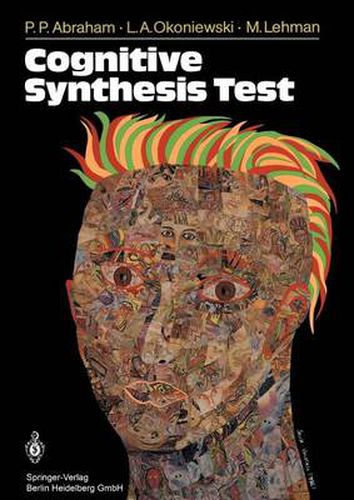Readings Newsletter
Become a Readings Member to make your shopping experience even easier.
Sign in or sign up for free!
You’re not far away from qualifying for FREE standard shipping within Australia
You’ve qualified for FREE standard shipping within Australia
The cart is loading…






This title is printed to order. This book may have been self-published. If so, we cannot guarantee the quality of the content. In the main most books will have gone through the editing process however some may not. We therefore suggest that you be aware of this before ordering this book. If in doubt check either the author or publisher’s details as we are unable to accept any returns unless they are faulty. Please contact us if you have any questions.
Table Development and Rationale …1 . . of Contents Stimulus Choice and Rationale …3 Administration …4 References …5 Sample Data for Schizophrenics …6 Sample Data for Other Diagnostic Categories …9 1 Projective tests have been valuable in personality assessment, Introduction diagnosis, and treatment by eliciting information about a per- son’s thinking, feelings, fantasies, interests, attitudes, and rela- tionships with others. Picture-story methods such as Murray’s Thematic Apperception Test (Murray et al. 1938), The Children’s Apperception Test (Bellak and Bellak 1950), Van Lennep’s Four- Picture Test (1956), Pickford Projective Pictures (1963), The Object Relations Technique (Phillipson 1956), and Symonds Pic- ture-Story Test (1948) have proven to be successful in revealing underlying personality dynamics. The Cognitive Synthesis Test (CST) appears to be an innovative and effective technique for evoking verbalizations by means of pictorial material. It offers the opportunity to study fantasy mate- rial of psychotic and schizophrenic adolescents, as well as patients in other diagnostic categories.
$9.00 standard shipping within Australia
FREE standard shipping within Australia for orders over $100.00
Express & International shipping calculated at checkout
This title is printed to order. This book may have been self-published. If so, we cannot guarantee the quality of the content. In the main most books will have gone through the editing process however some may not. We therefore suggest that you be aware of this before ordering this book. If in doubt check either the author or publisher’s details as we are unable to accept any returns unless they are faulty. Please contact us if you have any questions.
Table Development and Rationale …1 . . of Contents Stimulus Choice and Rationale …3 Administration …4 References …5 Sample Data for Schizophrenics …6 Sample Data for Other Diagnostic Categories …9 1 Projective tests have been valuable in personality assessment, Introduction diagnosis, and treatment by eliciting information about a per- son’s thinking, feelings, fantasies, interests, attitudes, and rela- tionships with others. Picture-story methods such as Murray’s Thematic Apperception Test (Murray et al. 1938), The Children’s Apperception Test (Bellak and Bellak 1950), Van Lennep’s Four- Picture Test (1956), Pickford Projective Pictures (1963), The Object Relations Technique (Phillipson 1956), and Symonds Pic- ture-Story Test (1948) have proven to be successful in revealing underlying personality dynamics. The Cognitive Synthesis Test (CST) appears to be an innovative and effective technique for evoking verbalizations by means of pictorial material. It offers the opportunity to study fantasy mate- rial of psychotic and schizophrenic adolescents, as well as patients in other diagnostic categories.